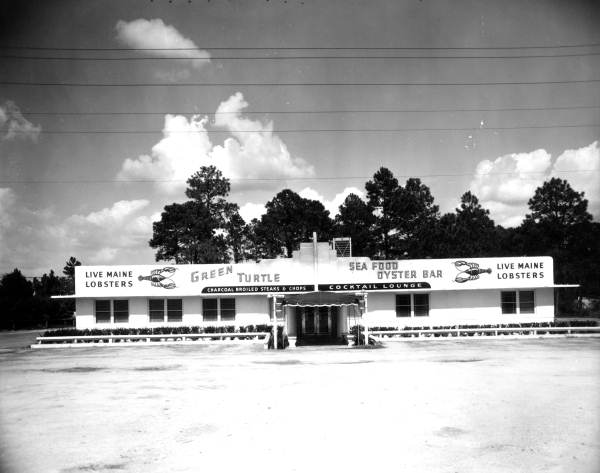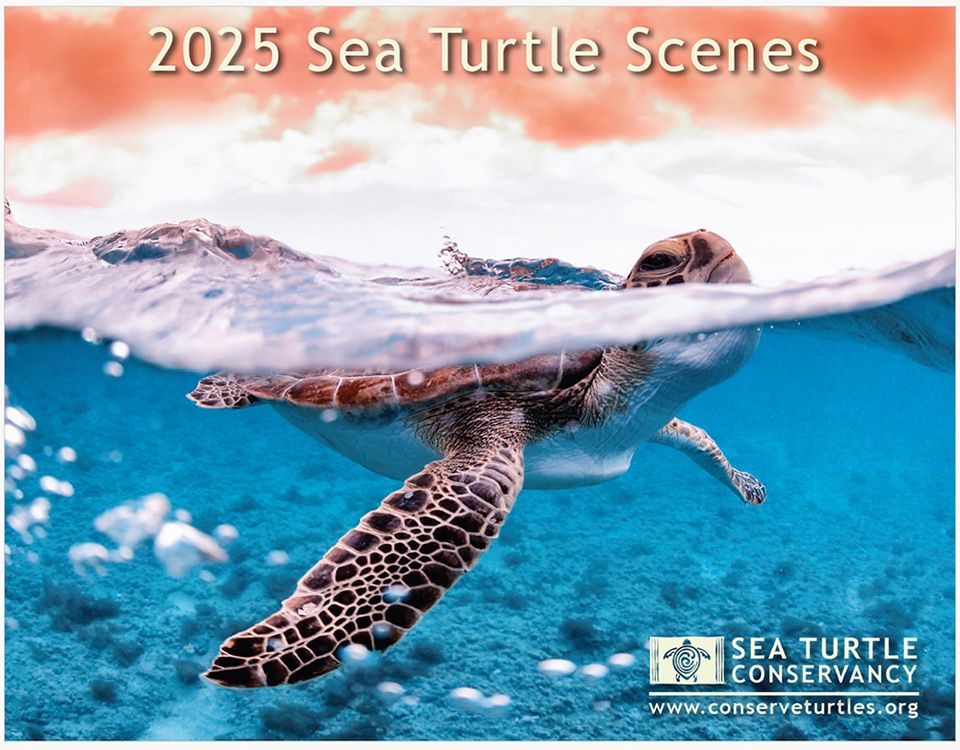Sea Turtle Conservation in Florida: Part III
A Fishe No More:
The Early History of Sea Turtle Conservation Law and Policy in Florida
Part III
Thomas T. Ankersen, Professor Emeritus
University of Florida Levin College of Law
April 2024

Introduction
In the early 1970s, Florida continued to struggle with managing sea turtles as a fishery, but the writing was on the wall. A booming conservation movement and increasingly sophisticated science, coupled with depleted stocks, led to the demise of the fishery. By the end of the 1970s, sea turtles were a “fishe” no more.
The Early 70s: From Commercial Fish to Protected Species – The Beginnings of Modern Florida Sea Turtle Conservation Policy
1970 mark a watershed year in the development of Florida sea turtle policy, and the beginning of the end of a legal fishery in Florida. The progenitor of what would become the Sea Turtle Protection Act began to take further shape with substantial amendments to Section 370.12, the statewide law first adopted in 1941.[1] The 1970 statute increased the fines for prohibited activities associated with nests and eggs on the beach (from $100 to $600), banned import and trade in “young sea turtles,” signaling an end to hatchery and “head-start” programs in Florida, and added leatherbacks, trunkbacks, hawksbills and Atlantic ridleys to the prohibition on take of nesting turtles and turtles within ½ mile of the shore during the nesting season. The new law also obligated the State to begin to set aside nesting beaches for conservation to control the impact of predation on nesting success (the first time in law that predation had been recognized as an issue). Finally, it created an administrative process for the State’s Department of Natural Resources to establish legal size limits, instead of relying on legislation to accomplish this management tool. All told, 1970 may be the year that marks the Sea Turtle’s transition from fisheries law to protected species law. It appears to be the first time the word “extinction” is used in state law in reference to sea turtles.
The issue of creating a minimum size limit became a contentious one, because the science for determining that size had not been established. In fisheries management, size limits are in part used as a proxy for sexual maturity and reproductive capacity. At the time the policy debate over minimum size for legal green turtle take was playing out in Tallahassee, the age, and hence size, for the species’ reproductive maturity had not been established. Nonetheless, charged by the 1970 legislation with establishing these limits, the staff of the State Board of Conservation, led by its Director of Research Robert Ingle, recommended a carapace length limit of 31 inches for Green Turtles on the Atlantic Coast and 26 inches on the Gulf Coast. At a contentious meeting of the Governor and Cabinet, which approved Board of Conservation rules, Ingle was grilled on the science for these carapace lengths, and admitted he had none – that it was essentially a compromise to keep the fishery open.[2] At that same meeting a politically connected graduate student presented data from the Atlantic Coast on the limited green turtle nesting that occurred there and stated he had never seen a nesting green turtle less than 39 inches. Frustrated with Ingle and Board Staff, the Governor and Cabinet raised the limit to 41 inches for the Atlantic, while maintaining it at 26 inches for Gulf. It would not be until the early 1980’s that sea turtle biologists could conclude with some certainty that sexual maturity in green turtles and other species could take decades.[3]
In 1971, Section 370.12 was again amended, this time to extend the reach of the prohibition for in-water take for all species from within ½ mile of the shoreline to within the “Territorial Waters of the State” (3 statute miles on the Atlantic Coast and 3 “leagues” or 9 nautical miles on the Gulf Coast).[4] This prohibition applied to Loggerheads, Trunkbacks, Leatherbacks, Hawksbills and Ridleys during the nesting season. The same spatial expansion was applied to Greens, but it applied year-round to the entire East Coast, except the Florida Keys. This statute effectively ended the take of Green Turtles on Florida beaches and in Florida waters along the Atlantic Coast, except in Monroe County, where the 41-inch carapace length the Governor and Cabinet had previously established, was required to harvest Greens. Green turtles on the Gulf Coast could still be harvested but could only be taken when the carapace length exceeded 26 inches, a nod to the limited fishery that was hanging on in Cedar Key, Florida, where the Greens gathered to forage, but not to nest.[5]

Context Is Important: Emerging Sea Turtle Conservation Law and Policy at The Federal and International Level
While sea turtle conservation and fishery management approaches were diverging, events were unfolding internationally and in Washington that suggested the noose was tightening on the Florida sea turtle fishery. As early as 1963, negotiations had begun on an international agreement to protect endangered and threatened wildlife.[6] The scientific basis for these negotiations came from the work of International Union for the Conservation of Nature (IUCN), an international conservation organization, which created the “Red Data Book,” an inventory of the conservation status and extinction risk of species worldwide begun in 1964.[7] Archie Carr was asked to chair the Marine Turtle Specialist Group, in order to provide the science for the consideration of the inclusion of sea turtles in the Red Data Book, which occurred in 1968.[8] IUCN’s efforts would set the stage for the 1973 passage of the global Convention on International Trade in Endangered Species (CITES), and the eventual inclusion of all species of sea turtles on the lists that restricted or prohibited trade. In 1973, the Florida legislature passed a resolution encouraging the U.S. Government to “seek an international convention and agreement for the protection of the Green Sea Turtle.”[9] Clearly the tide had turned.
In the United States, there was growing public interest and increasing concern over the survival of endangered wildlife. In 1966, Congress passed the “Endangered Species Preservation Act,” the first federal legislation on endangered species.[10] It required listing but did not create substantive obligations. In 1968, the first species were listed, including three reptiles, but no sea turtles. In 1969, the Endangered Species Preservation Act was renamed the Endangered Species Conservation Act and extended its protections to species “threatened with worldwide extinction.”[11] In 1970, the U.S. Fish and Wildlife Service listed three species: the hawksbill, the leatherback and the Atlantic ridley, as “threatened with worldwide extinction.”[12] This restricted importation of these species but did not impose domestic obligations. Those obligations would come in 1973, with the passage of the Endangered Species Act as we now know it.
Conclusion
By the early 1970s, the Florida sea turtle fishery had been so depleted that it ceased to be of commercial interest for all but a handful of fishers in Cedar Key on Florida’s Gulf Coast. Interest in sea turtle aquaculture, once a promising avenue for research, had also diminished. The 1973 federal Endangered Species Act, and the 1973 International Convention on Trade in Endangered Species effectively ended both.
Coming Next
Our next blog will depart from a chronological narrative of sea turtle law and policy and focus on the history of the Florida’s approach to lighting policy. Scientific advancement has allowed us to deeply understand the role light plays in adult and hatchling orientation, both in the water and on the beach. As Florida’s beaches developed, the night skies lit up, sea turtles suffered, and the State searched for an appropriate policy response.
Digging Deeper
Blair E. Witherington, Sea Turtles: an extraordinary natural history of some uncommon turtles (2006).
Alison Rieser. The Case of the Green Turtle: An Uncensored History of a Conservation Icon (2012).
Frederick D. Rowe, The Man Who Saved Sea Turtles: Archie Carr and the Origins of Conservation Biology (2007).
Chris Wold, The status of sea turtles under International environmental law and International environmental agreements, 5 J. of Int’l. Wildlife L. & Pol’y. 11–48 (2002) (DOI: 10.1080/13880290209353997).
Stephen P. Geiger, In Memoriam Robert M. Ingle 1917-1997. Journal of Shellfish Research, vol. 42, no. 3, Dec. 2023, pp. 343+.
References
This project was funded (in whole or in part) by a grant awarded from the Sea Turtle Grants Program. The Sea Turtle Grants Program is funded from proceeds from the sale of the Florida Sea Turtle License Plate. Learn more at www.helpingseaturtles.org.
[1] Ch. 70-357, 1970 Fla. Laws 1137 (“An Act relating to the protection of marine turtles; amending section 370.12(1) to make certain acts with relation to sea turtles unlawful; providing for studies of green turtles and nesting preserves to be made by the department of natural resources; prohibiting importation or sale of products made from certain turtles; providing exceptions; providing an effective date”).
[2] The behind-the-scenes story of the politics of establishing size limits for Green Turtles is recounted in Chapter 11 of Alison Reiser’s excellent book “The Case of the Green Turtle: An Uncensored History of a Conservation Icon.”
[3] See e.g. Colin Limpus, Notes on growth rates of wild sea turtles, Marine Turtle Newsletter 10:3-5 (1979); Colin J. Limpus & David G. Walter, 1980. The growth of immature green turtles (Chelonia mydas) under natural conditions, 36(2) Herpetologica 162–165 (1980); George H. Balazs, Biology and Conservation of Sea Turtles 117–125 (K. A. Bjorndal ed., Smithsonian Institution Press 1995) (“Growth rates of immature green turtles in the Hawaiian Archipelago”).
[4] Ch. 71-145, 1971 Fla. Laws 1031 (“An ACT relating to marine turtles amending §370.12(b), Florida Statutes, as amended by chapter 70-357, Laws of Florida; providing more specific regulations concerning the taking or possessing of green turtles; redefining the area in which the taking or possessing of other marine turtles is prohibited; deleting provisions for permits to capture turtles, providing penalties; providing an effective date”).
[5] Robert M. Ingle, Summary of Florida Commercial Marine Landings, 55–62 (Fla. Dep’t. of Nat. Res., Div. of Marine Res., Bureau of Marine Sci. & Tech. 1971) (“Florida’s sea turtle industry in relation to restrictions imposed in 1971”).
[6] Willem Wijnstekers, The Evolution of CITES 31 (2011) (available at: https://cites.org/sites/default/files/common/resources/Evolution_of_CITES_9.pdf).
[7] See Int’l Union for Conservation of Nature Background & History, https://www.iucnredlist.org/about/background-history.
[8] Frederick Rowe, The Man Who Saved Sea Turtles: Archie Carr and the Origins of Conservation Biology 169–180 (2007).
[9] Senate Memorial No. 795. 1973 Fla. Laws 1346 (“A Memorial to the United States Department of State seeking an international convention and agreement for the protection of the Green Sea Turtle”).
[10] Endangered Species Preservation Act of 1966, Pub. L. No. 89-669, 80 Stat. 926 (available at: https://www.govinfo.gov/content/pkg/STATUTE-80/pdf/STATUTE-80-Pg926.pdf).
[11] Endangered Species Conservation act of 1969, Pub. L. No. 91-135 83 Stat. 275 (available at: https://www.govinfo.gov/content/pkg/STATUTE-83/pdf/STATUTE-83-Pg275.pdf).
[12] 35 F.R. 18319 (Dec. 2, 1970) (codified at 50 C.F.R. § 17.11).
